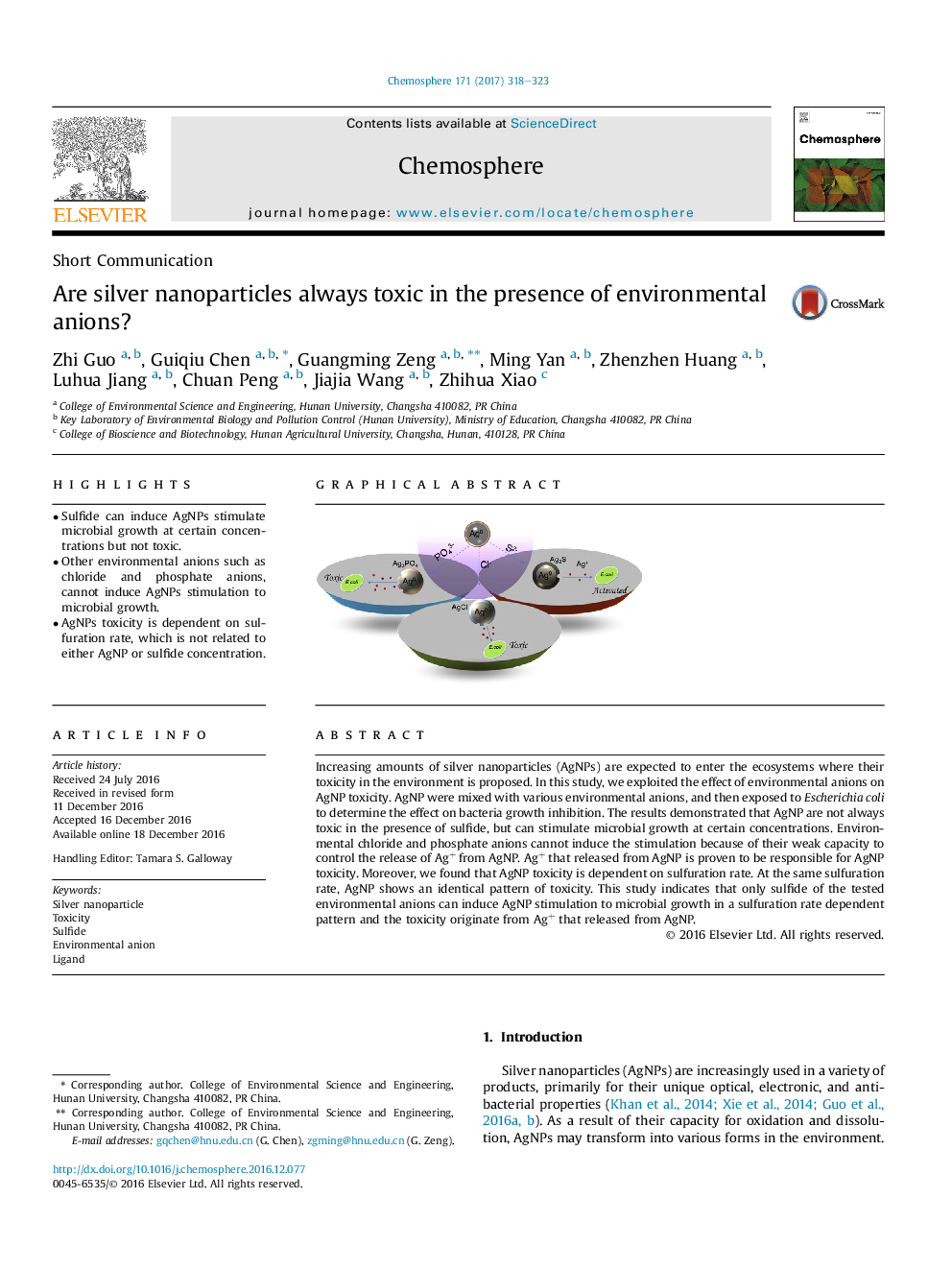| Article ID | Journal | Published Year | Pages | File Type |
|---|---|---|---|---|
| 5746364 | Chemosphere | 2017 | 6 Pages |
â¢Sulfide can induce AgNPs stimulate microbial growth at certain concentrations but not toxic.â¢Other environmental anions such as chloride and phosphate anions, cannot induce AgNPs stimulation to microbial growth.â¢AgNPs toxicity is dependent on sulfuration rate, which is not related to either AgNP or sulfide concentration.
Increasing amounts of silver nanoparticles (AgNPs) are expected to enter the ecosystems where their toxicity in the environment is proposed. In this study, we exploited the effect of environmental anions on AgNP toxicity. AgNP were mixed with various environmental anions, and then exposed to Escherichia coli to determine the effect on bacteria growth inhibition. The results demonstrated that AgNP are not always toxic in the presence of sulfide, but can stimulate microbial growth at certain concentrations. Environmental chloride and phosphate anions cannot induce the stimulation because of their weak capacity to control the release of Ag+ from AgNP. Ag+ that released from AgNP is proven to be responsible for AgNP toxicity. Moreover, we found that AgNP toxicity is dependent on sulfuration rate. At the same sulfuration rate, AgNP shows an identical pattern of toxicity. This study indicates that only sulfide of the tested environmental anions can induce AgNP stimulation to microbial growth in a sulfuration rate dependent pattern and the toxicity originate from Ag+ that released from AgNP.
Graphical abstractDownload high-res image (179KB)Download full-size image
